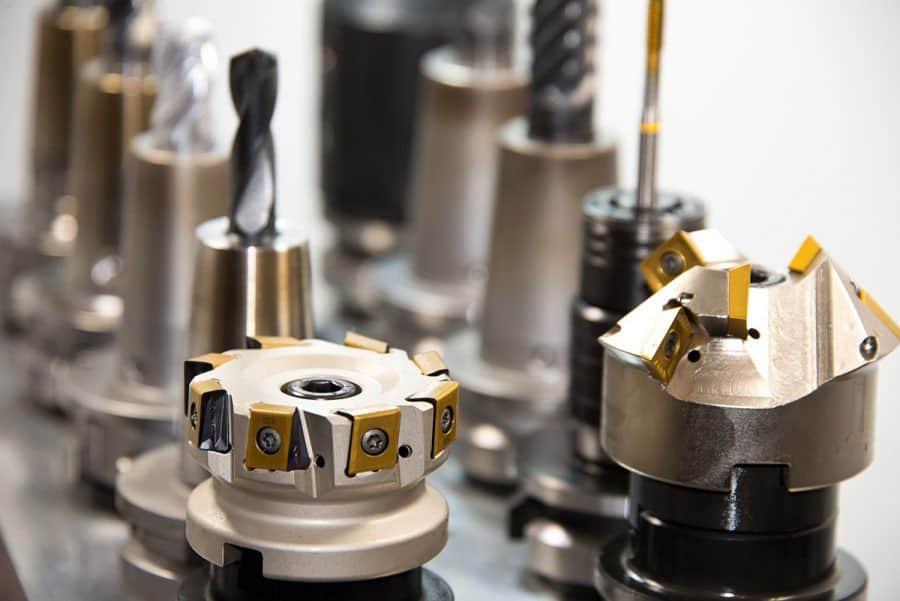Machining and metal fabrication are two important industrial processes used to create parts and products from metal materials. While they may seem similar at first glance, there are important differences between the two that make each process uniquely suited to different applications.
Machining is the process of removing material from a workpiece to create a desired shape or surface finish. This is typically done using a cutting tool, such as a drill press, milling machine, or lathe. Machining is used to create precise, high-quality parts for a wide range of applications, including aerospace, automotive, medical, and industrial manufacturing.
Metal fabrication, on the other hand, involves the use of various processes to shape, cut, and join metal materials into finished products. This can include processes like welding, bending, and cutting, as well as more specialized processes like laser cutting, waterjet cutting, and plasma cutting. Metal fabrication is used to create a wide range of products, from simple brackets and frames to complex machinery and equipment.
To better understand the differences between machining and metal fabrication, it’s important to look at the specific processes involved in each.
Machining Processes
Machining is a broad term that encompasses a variety of processes used to remove material from a workpiece. Some of the most common machining processes include:
- Turning: Turning is a process used to create cylindrical parts, such as shafts, by rotating a workpiece while a cutting tool removes material from the surface. This is typically done using a lathe machine.
- Milling: Milling is a process used to create flat or contoured surfaces by removing material from a workpiece using a rotating cutting tool. This can be done using a vertical or horizontal milling machine.
- Drilling: Drilling is a process used to create holes in a workpiece using a drill bit. This can be done using a drill press or a CNC machine.
- Grinding: Grinding is a process used to create a smooth surface finish on a workpiece using a grinding wheel or abrasive belt.
- Broaching: Broaching is a process used to create complex internal shapes or keyways in a workpiece using a special cutting tool called a broach.
- Honing: Honing is a process used to create a precise surface finish on a workpiece using a honing tool.
Each of these machining processes has its own advantages and disadvantages, and is suited to different types of workpieces and applications.
Metal Fabrication Processes
Metal fabrication involves a variety of processes used to shape, cut, and join metal materials into finished products. Some of the most common metal fabrication processes include:
- Welding: Welding is a process used to join two pieces of metal together by heating them to their melting point and then allowing them to cool and solidify. This can be done using a variety of welding techniques, including MIG welding, TIG welding, and stick welding.
- Cutting: Cutting is a process used to remove material from a workpiece using a cutting tool or machine. This can include processes like laser cutting, waterjet cutting, plasma cutting, and more.
- Bending: Bending is a process used to shape a piece of metal into a desired shape or angle using a bending machine.
- Punching: Punching is a process used to create holes or other shapes in a workpiece using a punch and die set.
- Rolling: Rolling is a process used to shape a piece of metal into a curved shape using a rolling machine.
- Forming: Forming is a process used to shape a piece of metal into a specific shape using a press or other specialized equipment.
Like machining, each of these metal fabrication processes has its own advantages and disadvantages, and is suited to different types of workpieces and applications.
While there are some similarities between machining and metal fabrication, there are also important differences that set the two processes apart.
One key difference is the type of parts and products that each process is best suited for. Machining is typically used to create precise, high-quality parts with tight tolerances and complex shapes. This makes it well-suited for applications where precision is critical, such as aerospace, medical, and industrial manufacturing.
Metal fabrication, on the other hand, is typically used to create larger, more complex products with a variety of shapes and sizes. This can include everything from simple brackets and frames to complex machinery and equipment. Metal fabrication is also well-suited for applications where durability and strength are important, such as construction and heavy equipment manufacturing.
Another difference between machining and metal fabrication is the level of automation involved in each process. Machining processes are often highly automated, with computer-controlled machines performing most of the work. This allows for greater precision and repeatability, as well as faster production times and lower costs.
Metal fabrication processes, on the other hand, are often more manual and labor-intensive. While some processes, such as laser cutting and CNC punching, can be highly automated, many others still require skilled workers to operate the equipment and perform the necessary tasks.
Overall, both machining and metal fabrication are important processes in the world of manufacturing. While they may be different in many ways, they both play a critical role in creating the parts and products that we rely on every day. By understanding the differences between these processes, manufacturers can make informed decisions about which one is best suited to their specific needs and requirements.

